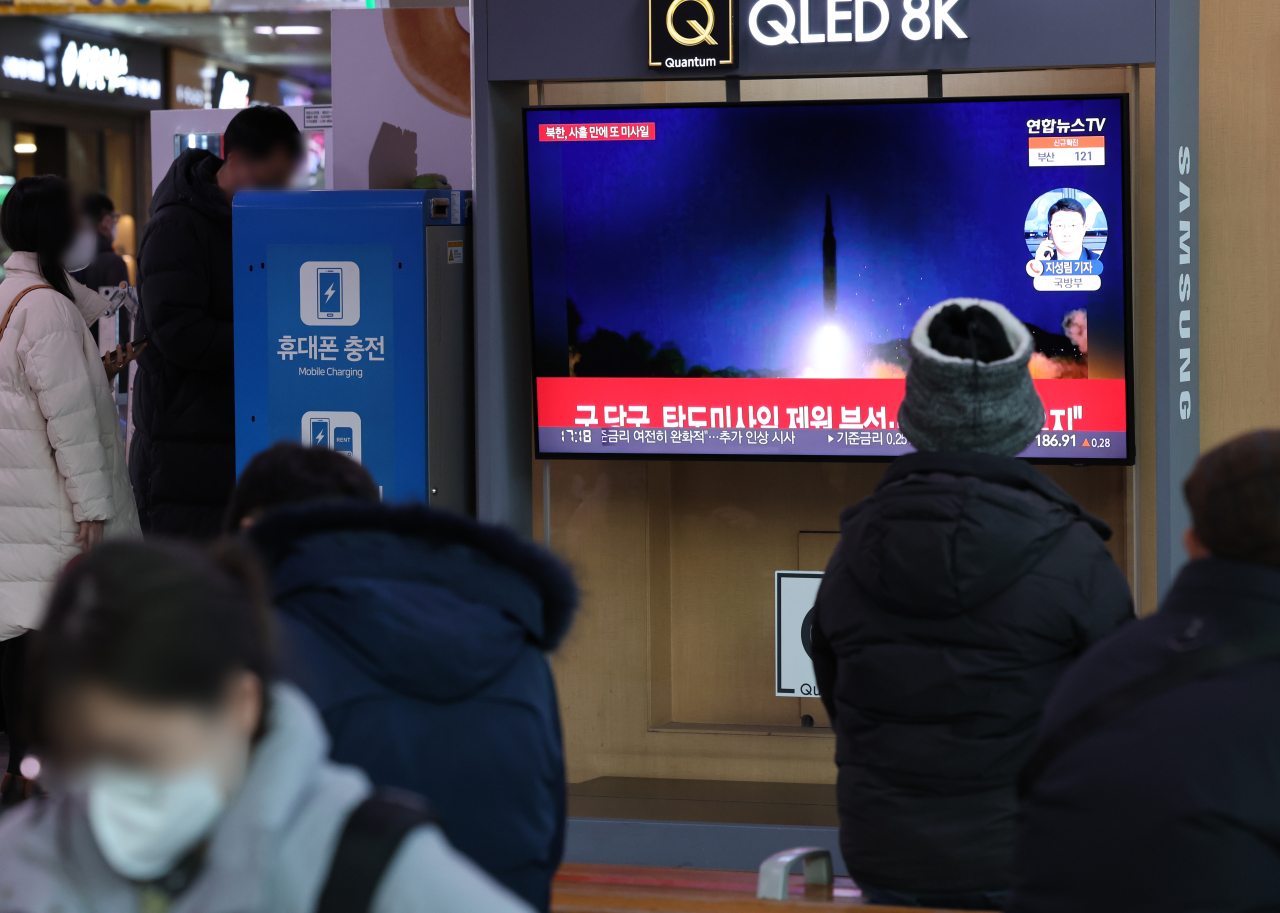North Korea on Thursday fired two apparent short-range ballistic missiles at a low altitude from a seashore city in South Hamgyong Province toward its east coast.
“We are aware of the ballistic missile launches and are consulting closely with our allies and partners,” the US Indo-Pacific Command said in a statement, adding the launch does not pose an “immediate threat” to US personnel, territory or allies.
South Korea’s Joint Chiefs of Staff said the military had “detected two projectiles, which are presumed to be short-range ballistic missiles, being launched northeast from the Hamhung city area toward the East Sea at around 08:00 and 08:05 a.m.”
The two missiles flew around 190 kilometers at a top altitude of 20 kilometers, the JCS said, adding that South Korean and US intelligence authorities are analyzing the specifications.
“Our military maintains readiness posture in preparation for additional launches while tracking and keeping close tabs on related (North Korean) movements.”
A South Korean military official, who wished to remain anonymous, said the two projectiles are presumed to have hit a target on the small uninhabited island of Al, in light of flying distance and altitude.
North Korea previously set a target on the same island when firing KN-23 and KN-24 short-range ballistic missiles on Jan. 14 and 17.
Seoul also detected signs of a launch preparation in the area, according to the official.
The South Korean military and analysts said it was unable to confirm the type of the missiles launched on Thursday as the projectiles, unusually but not unprecedentedly, traveled a short distance at a low altitude.
But experts see that North Korea could have used a KN-25 “super-large caliber” multiple-rocket launcher, a KN-09 300mm multiple launch rocket system, or a variant of a KN-23 short-range ballistic missile.
Penetrating missile defenses
The main goal of the low-altitude flight test would be to enable a projectile to fly below interceptors’ minimum intercept altitude and to penetrate and incapacitate the ballistic missile defense system, Shin Jong-woo, a senior analyst at the Korea Defense and Security Forum, said.
“The (low-altitude) test flight could indicate a change in North Korea’s established pattern of missile attacks,” Shin told The Korea Herald. “The test could aim at the weak point of South Korea’s ballistic missile defense system.”
In general, it is more challenging to detect and intercept missiles fired at lower altitudes. But Thursday’s ballistic missiles appeared to be fired at the lowest-ever altitude.
Thursday’s launch, at the same time, would be to test the target accuracy of the ballistic missiles.
“North Korea would seek to test the ability of a projectile precisely hitting a target while flying at a low altitude,” Shin said.
Shin also pointed out that North Korea chose Hamhung city, a town on the east coast, to secure the safety of the test-firing. He explained that a projectile fired at a lower altitude has a greater risk of coming down.
Recently launched missiles have notably enhanced survivability and maneuverability, which could eventually incapacitate the missile defenses of South Korea, the US and their allies.
This year, North Korea has fired four types of missiles including a new maneuverable reentry vehicle, which North Korea labeled a “hypersonic missile.”
Pyongyang also launched the KN-23 and KN-24 short-range ballistic missiles, which Seoul-based analysts view as dual-capable missiles able to deliver both conventional and nuclear payloads.
North Korea on Tuesday also fired two suspected cruise missiles, which travel at a lower flight altitude than ballistic missiles.
Sixth weapons test Thursday’s launch marks North Korea’s sixth round of weapon tests this year, with six ballistic missiles in four discrete launches conducted between Jan. 5 and Jan. 17 in short intervals.
Cho Han-bum, a senior research fellow at the Korean Institute for National Unification, said Thursday’s launch is part of indications that North Korea has moved toward a “hard-line” foreign policy.
“(The launch) is in line with North Korea’s move to gradually ratchet up (pressure) to raise its leverage in (potential) negotiations,” Cho told The Korea Herald.
“Pyongyang does not seem to intend to cross the red line at this juncture, as such an act would impose another burden on the country.”
Cho also noted that North Korea has sought to continue relatively low-profile weapons tests in the run-up to the Beijing Olympics, pointing to the sequence of missile launches from a purportedly hypersonic missile to cruise missiles. Thursday’s flight distance is the shortest among this year’s launches.
“North Korea has taken steps to tone down ahead of the Beijing Winter Olympics while making its presence felt,” Cho said.
“As the world’s eyes are still riveted on North Korea, the country appears to achieve its tactical goal. But North Korea would abstain from making high-profile provocations during the Winter Olympic Games.”
By Ji Da-gyum (
dagyumji@heraldcorp.com)




![[AtoZ of Korean mind] Ever noticed some Koreans talk to themselves?](http://res.heraldm.com/phpwas/restmb_idxmake.php?idx=644&simg=/content/image/2024/11/03/20241103050186_0.jpg)



